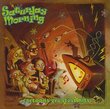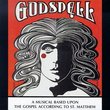| All Artists: Vangelis Title: Invisible Connections Members Wishing: 2 Total Copies: 0 Label: Deutsche Grammophon Release Date: 6/20/1990 Genres: Dance & Electronic, Special Interest, New Age, Pop, Rock Styles: Ambient, Techno, Experimental Music, Progressive, Electronic Number of Discs: 1 SwapaCD Credits: 1 UPC: 028941519627 |
Search - Vangelis :: Invisible Connections
 | Vangelis Invisible Connections Genres: Dance & Electronic, Special Interest, New Age, Pop, Rock
|
CD DetailsSimilarly Requested CDs
|
CD ReviewsContemplative, subtle, and eerily unsettling. Emlyn Addison | Providence, RI | 03/13/2006 (5 out of 5 stars) "This is a profound foray into the Ambient style, but it requires an OPEN MIND, and time to become accustomed to its slightly Stockhausen-like rhythmic ruminations. It's truly a masterpiece in its own right--there isn't anything else on the planet quite like it, and it demands a certain aesthetic maturity to fully appreciate. Lie back and let the thick vibrations saturate your senses." Experimental Vangelis!!! Louie Bourland | Garden Grove CA | 01/19/2007 (5 out of 5 stars) "Like his 1978 album "Beaubourg", Vangelis's 1985 release "Invisible Connections" has had a divided opinion amongst those who have followed his music closely over the years. Like another reviewer has stated, 'either you get it or you don't'. While "Beaubourg" consisted of music that was more in the style of Morton SUbotnick or Karlheinz Stockhausen, "Invisible Connections" finds Vangelis adopting a style that's closer to Brian Eno only in a more subdued abstract fashion. The 18-minute title track is divided into to two distinct sections. The opening half consists of random treated percussion sounds (mainly cymbals and woodblocks) as well as what sounds like a prepared piano. At around the nine minute mark, the piece shifts into a dark ambient soundscape consisting of a low rumble, random keyboard notes and drones and Subotnick-like sequences hovering in the background. Altogether it is quite extraordinary if listened to with the proper set of ears. The two pieces that make up the second half of the album are similar to each other. "Atom Blaster" is similar to the "Beaubourg" album but the emphasis is on the spaces between the random notes and is more abstract. "Thermo Vision" takes "Atom Blaster's" ideas and takes them to the extreme. Granted, there is nothing melodic about these two pieces, just random notes enchanced by reverb and the occasional gong sound - Quite different from the trademark Vangelis style. While the album has its share of naysayers, "Invisible Connections" is a satisfying piece of work. It's more of an avant-garde classical album than it is an album of commercial music. It's definitely worth a listen especially if you enjoy experimental music. Not Vangelis's best work, obviously but still a challenging album overall." Vangelis in Experimental Mode Michael H. I. Borger | Nappanee, Indiana | 01/03/2010 (3 out of 5 stars) ""Invisible Connections" (Deutsche Grammophon 1985) is an extremely interesting album. I have been a decades-long Vangelis fan and I am working to gradually study everything he has recorded. My own interest stems from working as a keyboard synthesizer musician on many recording projects. He has been the single most influential synthesizer musician that I have encountered, and I highly respect his musical integrety. I have enjoyed Vangelis as a wonderful musician both from the beauty and power of his music and the technical prowess in electronics that he exhibits through all of his work.
This album is a departure from nearly all his work that I have heard so far. While it has the raw synthesizer sounds so common in his music, this is a bare-bones electronic drift of sound. The direction of the music falls into the circular model of the raga rather than the linear model of Western orchestral music that we have come to expect from Vangelis. The music is very spare and features more silence than sound for much of the album. The attention here is on raw sound. Vangelis uses ongoing hums and electronic ambience as a pond on which to float his water lillies of music. If you like the work of Tangerine Dream in an abstract moment or perhaps John Cage in a more musical than usual mood, you get the idea. If you are looking for an album to stretch your ear and musical sensibilities, this is a good one. Do not expect the usual Vangelis trademark sweeping orchestral music. This is more on the experimental side. Many more conventional music critics would call this self-indulgent, but I do not. It is the sound of one of the greatest musicians of our times thinking out loud. The use of electronic sources and instruments for music has matured through the years to the point we find ourselves experienceing now. Keyboard based synthesizers have become more sophisticated and the least of what you can buy for a very reasonable price now leaves the Cadillac synthesizer of 1978 deep in the smoke and dust of the past. The ready availability of software-based synthesizers that model the great sounds of yesterday with the sophisticated sound processing of today have moved this musical area forward as well. Listening to "Invisible Connections" is a wonderful experience as it reveals the thinking and doing of Vangelis through the sounds and music one hears. As a synthesizer musician and artist I truly appreciate the work of Vangelis, even one as abstract as this. Listen to this album if you want to learn about synthesizer sound, voicing, and ambience. There also is a great deal of play with sound and silence. This is definitely worth checking out, but it is not for the musically faint of heart." |

 Track Listings (3) - Disc #1
Track Listings (3) - Disc #1








